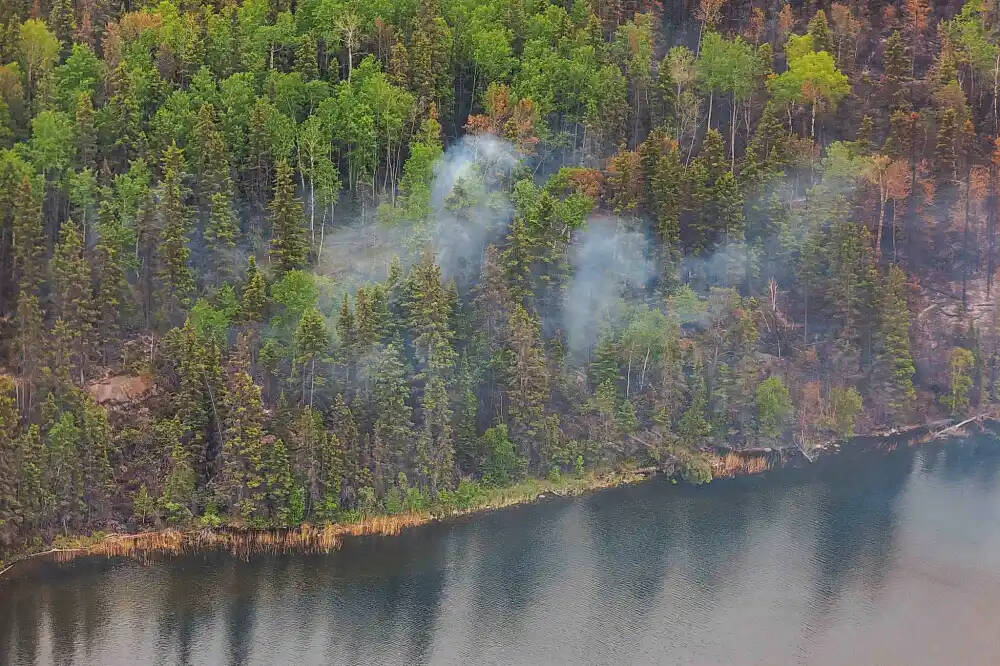Thompson residents prepare to flee wildfire
Advertisement
Read this article for free:
or
Already have an account? Log in here »
We need your support!
Local journalism needs your support!
As we navigate through unprecedented times, our journalists are working harder than ever to bring you the latest local updates to keep you safe and informed.
Now, more than ever, we need your support.
Starting at $15.99 plus taxes every four weeks you can access your Brandon Sun online and full access to all content as it appears on our website.
Subscribe Nowor call circulation directly at (204) 727-0527.
Your pledge helps to ensure we provide the news that matters most to your community!
To continue reading, please subscribe:
Add Brandon Sun access to your Free Press subscription for only an additional
$1 for the first 4 weeks*
*Your next subscription payment will increase by $1.00 and you will be charged $20.00 plus GST for four weeks. After four weeks, your payment will increase to $24.00 plus GST every four weeks.
Read unlimited articles for free today:
or
Already have an account? Log in here »
WINNIPEG — The leader of a northern Manitoba community advised residents to keep their vehicles ready Sunday as a wildfire raged outside the city.
A new wildfire started about eight kilometres outside of Thompson on Friday. At 11 a.m. it was seven hectares; nine hours later it had grown to 3,000 hectares. The wildfire is burning past the Thompson Airport on Highway 280.
On Sunday, the City of Thompson updated residents throughout the day on its Facebook page. Winds had died down overnight in the area and relative humidity had also dropped, the city reported.

Manitoba is having one of its worst wildfire seasons in recent years, and about 21,000 people were forced to flee their homes in June. (Mike Deal/Winnipeg Free Press files)
Heavy equipment was used to create new fire guard lines southwest of the fire lines near Mystery Lake, and air assets worked to stop the fire from spreading south.
While conditions have been favourable since the wildfire started, the city underscored that the situation remains “very serious” and advised residents to be prepared “for all potential scenarios. The Facebook post included a link to a Government of Canada webpage that includes advice on wildfire preparedness.
“I’ve been putting the message out for people to keep their vehicles gassed up,” Mayor Colleen Smook told the Winnipeg Free Press Sunday afternoon. “Pre-evacuation planning is very important without panicking the people.”
The city is home to 13,000 people, per the 2021 census. Smook noted that in the 53 years she’s called Thompson home, the city has never been evacuated.
The provincial emergency management organization and wildfire service have joined local firefighters to battle the blaze, Smook said.
“I’m cautiously optimistic because the plans are working so far,” she said. “We have a great team from Thompson leading (the effort) and getting the support coming up (from southern Manitoba) gives you another level of confidence that we’re doing all we can.”
Meanwhile, more than 140 kilometres away from Thompson, firefighters continued to battle a blaze in Tataskweyak Cree Nation (also known as Split Lake).
The fire started northwest of the community on Friday and spread quickly due to strong winds. It destroyed seven homes in a day that the chief and council of the First Nation described as “horrendous.”
During a livestream on Facebook Saturday, Chief Doreen Spence offered her condolences.
“To the families that lost their homes, I want to say I’m really sorry,” she said. “We’ll be here for you guys.”
A large fire near Tataskweyak has been burning since late May and has been listed as out-of-control by Manitoba’s Natural Resources department for most of that time.
It briefly changed to being held for a few days at the end of June before switching back to out-of-control.
Tataskweyak declared a state of emergency on May 29 and an evacuation order was issued the next day. The return of Tataskweyak residents was to start in mid-June, but was delayed due to a malfunctioning water treatment plant.
Spence noted the emotional toll the last few months have taken on community members.
“I know being away longer is not the news you wanted to hear, but it’s for your safety,” she said.
Elsewhere in the province, the Town of Leaf Rapids posted on its Facebook page around 10 a.m. Sunday that an evacuation was “likely expected” and might be called “with 10 hours or less notice.” Two out-of-control fires burned nearby — one southwest of Leaf Rapids and the other east of the town.
“Wildfire Services and the Office of the Fire Commissioner… will be reviewing the weather forecast to further consider the likelihood of threat to the town,” the Facebook post read. “Arrangements related to evacuation are taking place in preparation. Further notice will be provided to residents as it becomes available.”
In a fire bulletin issued Friday afternoon, the province reported that the southern and very northern areas of the province have a low-to-moderate fire danger level. The west and northeast areas have a high-to-very-high danger level, with some pockets of extreme fire danger.
While fire and travel restrictions have been lifted for most of the province, permits are required for travel within an active fire boundary, the bulletin noted.
Manitoba is having one of its worst wildfire seasons in recent years, and about 21,000 people were forced to flee their homes in June.
The Canadian Red Cross told the Free Press in an email on Sunday that it is providing support to people from Lynn Lake, Marcel Colomb First Nation, Pimicikamak Cree Nation, O-Pipon-Na-Piwin Cree Nation, Tataskweyak Cree Nation and Mathias Colomb Cree Nation.
The Red Cross is providing evacuees with registration, reception and information, emergency accommodations, meals and personal services, and co-ordinating air transportation, according to spokesperson Jason Small.
» Winnipeg Free Press, with files from The Canadian Press
